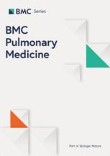Abstract
Background
This study’s purposes were to evaluate the impact of biological therapies on outcomes in patients with severe asthma (SA) and chronic rhinosinusitis (CRS) and to compare these effects among those with NP (CRSwNP) versus those without NP (CRSsNP) in the “real-world” setting in Saudi Arabian patients.
Methods
From March to September 2022, a retrospective observational cohort study was undertaken at the severe asthma clinics of the Armed Forces Hospital—Southern Region (AFHSR) and King Khalid University Hospital, Abha, Saudi Arabia, to delineate the effects of dupilumab therapy. Outcomes were assessed, including clinical outcomes, FEV1, and laboratory findings before and one year after dupilumab. Post-therapy effects were compared between CRSwNP and CRSsNP.
Results
 |
| Comparisons between patients with and without nasal polyps before, 6, and 12 months after dupilumab therapy |
Conclusions
Patients with CRS experienced significant improvements in clinical, FEV1, and laboratory outcomes after dupilumab therapy. However, these improvements were not maintained when comparing CRSwNP with CRSsNP. There were no significant differences between those with and without NP regarding ACT and OCs use or laboratory (eosinophilic count, serum IgE level) parameters. Further prospective multicenter studies are warranted.

No comments:
Post a Comment